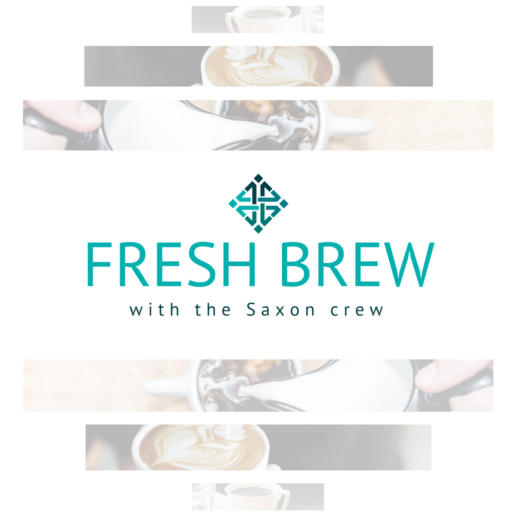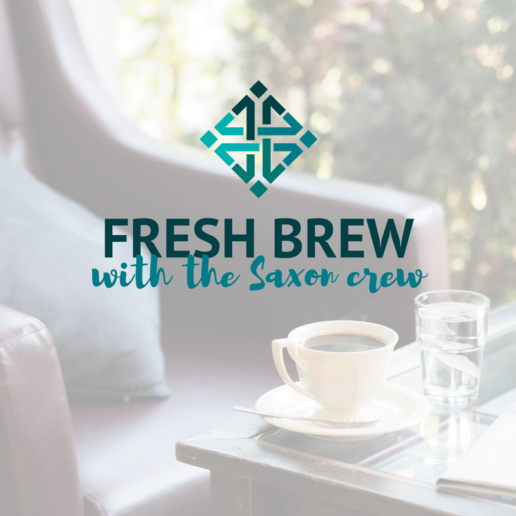You May Want To Rethink Your 'Cultural Fit' Mentality, and Here's Why
Why achieving diversity in tech requires firing the industry’s ‘cultural fit’ mentality
If you have interviewed for a technology job, there’s a good chance the words “culture” and “fit” made an appearance during the phone-screen phase, or in early rounds of interviews. It is no longer enough for a candidate — especially early to mid-career — to arrive to job interviews with a stellar resume and relevant technical skills. They might also have to come with their best “I’m normal and will fit into the overall team culture of this company” outfit on. Over the past decade, the idea of hiring for “cultural fit” has become as important as, and at times superseded, hiring to fit a job description across forward-looking industries, from tech to transportation.
The nuance of this shift may be a cause for concern — especially for a global tech sector in search of a clear route to workforce diversity. Many of today’s tech human resources teams are tasked with recruiting a diverse group of people and retaining star employees. However, they still tend to supplement those pursuits with cultivating a unified office culture. While the industry has largely moved on from using ping pong tables as a recruiting tool, hiring people who pass the Beer Test — an applicant that hiring managers could work with in the office and hang with at happy hour — remains commonplace. Further, hiring based on a hiring manager’s own narrow set of requirements needed to fit their idea of a relatable person opens the door to all sorts of unconscious biases. Taking this recruiting shortcut also raises the bar for candidates from already under-represented groups, including minorities and women.
The main casualties: the pursuit of diversity and business bottom lines. It is true that research-backed conventional wisdom suggests happy workplaces are productive workplaces. What that line of thinking doesn’t account for is the fact that exclusively hiring talent for interpersonal compatibility can negatively impact the quality of work and focus of employees. In other words, employee camaraderie does not equal workplace compatibility. It definitely does not equal workforce diversity. And while a company may benefit from a general aspect of like-mindedness, there’s a great chance that the actual work is suffering due to the lack of diversity — both in people and ideas. Here in Toronto, hiring managers still focus heavily on likeability, which at times can be seen as more important than technical skills. My team and I recently began to see to potential impacts of “cultural fit” as we started to dive into the findings of our new report on the state of talent in Toronto’s emerging tech sector.
—techcrunch.com
Spot the differences between productivity and busyness
Productivity and busyness are often used interchangeably. This is a mistake. When you think about it, you can be busy and still get nothing really done.
Productivity is efficiently using time to change something, whether it be improving a project or taking care of an errand. Efficiency is the key word here, as no one would consider, say, spending an entire day writing a letter efficient.
Busyness is being occupied with a particular activity to the point where it becomes a priority. Spending an entire day writing a letter is busyness, but it wouldn’t be considered productive. Yet, we can say “It was a busy day” and it could be, mistakenly, interpreted as productivity.
The difference matters because productivity requires strategy: What works best, what is most important now, what matters over other tasks and other standards. Busyness prioritizes going forward, whether or not it is the best thing to do right now.
Being productive rather than busy requires stopping, strategizing and consideration before taking action. To be truly productive, you must not be afraid of pausing – and pausing feels like the opposite of being busy. You must let go of the need to feel busy.
One other simple tell: Productivity tends to give energy, while busyness tends to take it away. Getting things accomplished creates momentum as well as confidence, while doing busy work often makes inertia and frustration since it usually doesn’t lead to progress.
Read the article.
Source:
Brown D. (21 February 2018). "Spot the differences between productivity and busyness" [Web Blog Post]. Retrieved from address https://workwell.unum.com/2018/02/spot-the-differences-between-productivity-and-busyness/
Boring Little Miracles
From SHRM, this article goes into the importance of "boring little miracles" in the workplace
The success of an organization is often borne on the backs of people performing boring little miracles.
Boring little miracles don’t make headlines. They, perhaps purposely so, fly under the radar, disguised as everyday tasks performed under pressure or work that doesn’t feel like much to the person performing it. People performing boring little miracles get the job done and then pack up and go home like it was no big deal.
But it IS a big deal.
Boring little miracles add up over time. They are the compounding interest of organizational productivity, and they are performed by people who invest early and often. These miracles sneak up on you and can quickly become the expectation rather than the exception.
Boring little miracles are still miracles.
They aren’t jobs or tasks that are easy, they just appear that way because of the person doing the work. Highly experienced and highly trained professionals doing what they do don’t have to sweat the work that other people dread. They just do it.
“Hey, she’s always been good at this stuff”," or “Well, he’s the only one who knows how to do it,” you might hear around the office. But you shouldn’t take it for granted.
Recognize and reward the behavior you want to see more of. Make space for the work that grabs headlines AND the work that doesn’t in your rewards and recognition structure. Pay special attention to the people who prefer to stay out of the spotlight; honor their work and contributions because it is important, not necessarily because it grabs attention.
Make recognition for this work specific. Make it count.
Do it well enough, and your team and organization might just become a boring little miracle itself.
Read the article.
Source:
Escobar C. (26 February 2018). "Boring Little Miracles" [Web Blog Post]. Retrieved from address https://blog.shrm.org/blog/boring-little-miracles
Millennials, tech industry driving adoption of paid leave programs
More employers are voluntarily offering paid leave benefits to win over millennial workers in an increasingly competitive marketplace, but costs related to workforce management and thin profit margins in many industries have hampered widespread voluntary adoption, according to The Paid Leave Project’s report, “Emerging business trends in paid family medical leave.”
The project, an initiative managed by “action tank” Panorama, interviewed representatives from 470 large U.S. employers across 23 industries to find top reasons for voluntarily offering paid leave programs – as well as main barriers to offering such benefits.
The leading factor that prompts most companies to voluntarily offer the benefit is employee demand, particularly from millennial workers who hear about other companies’ paid leave policies from the media as well as from their friends and family members who receive such benefits. More than 40 percent of companies that already have paid leave cited this as a driver.
Some employers say they want to be considered a “best employer” within their industry. Says a representative from a manufacturing company: “A company can choose to be in the middle of the pack, but we don’t see that as a competitive advantage. We want to be leaders.”
Employers in specialized industries or geographies with a tight labor market say a compelling benefits package, including paid leave, is key to attracting and retaining top talent. “The war for talent is pretty bad,” says a representative from an aerospace company. “We are taking a deeper dive at looking to expand (our) total rewards.”
The tech industry is leading the way, with employers like Netflix and Spotify, respectively offering 52 weeks and 26 weeks of parental leave. Part of this is because other industries are increasingly needing tech talent as the “digital revolution” is now transforming their own sector, including transportation, retail, telecommunications, healthcare, and manufacturing. Some companies in these industries are directly reaching out to technology companies to benchmark against their benefits.
The main challenge to offering paid leave is cost, including paying for a resource to temporarily fill a role while also funding the employee’s leave,
“Employers from retail, manufacturing, transportation and others with a high concentration of hourly workers indicated that coverage is particularly challenging for their sectors,” the authors write. “Given the nature of production and frontline roles, it can be logistically complex for such workers to cover their coworkers’ duties in addition to their own.”
Those industries with low profit margins, such as retail and transportation, find it particularly difficult consider offering paid leave because it just isn’t financially viable, they contend.
Says a representative from a nationwide retailer: “How can I offer paid leave when I can’t even offer comprehensive healthcare, including dental insurance?”
However, a handful of employers in these industries who have embraced paid leave are seeing positive results, including outdoor clothing and gear retailer Patagonia, according to the report.Over the last five years, 100 percent of the women who have had children while working at Patagonia have returned to work. This has led to a balanced workforce and about 50 percent representation of women in all management levels.
For those who offer paid leave, many are also implementing “wrap-around” supports to complement the benefits, such as flexible work schedules to ramp on and off when employees return from leave, providing private locations for mothers to breastfeed, and employee resource groups for new parents. More and more employers are also expanding paid leave for those are providing caregiver services to elderly or disabled family members.
Organizations such as DMEC, the Integrated Benefits Institute (IBI), and providers such as LeaveLogic offer valuable research, tools, and resources for employers as they roll out or expand benefits, according to the report. Moreover, The Paid Leave Project, in collaboration with the Boston Consulting Group, created a comprehensive paid leave Playbook for employers, which includes cost calculator and industry benchmarking data; paid leave policy template; tips for employers in states with new paid leave laws were recently added; and paid Leave best practices and case studies of companies that offer the benefit.
The latest report builds on earlier work by The Paid Leave Project and the Boston Consulting Group, which in 2017 released “Why Paid Family Leave Is Good Business,” a summary report from initial research into the paid leave practices of more than 250 U.S. companies.
In 2018, The Paid Leave Project will focus its research on industry-specific dynamics, the challenges for companies in states with current or pending legislation, and how employers are tracking paid leave data, results, and return on investment.
Read the article.
Kuehner-Hebert K. (2 March 2018). "Millennials, tech industry driving adoption of paid leave programs" [Web Blog Post]. Retrieved from address https://www.benefitspro.com/2018/03/02/millennials-tech-industry-driving-adoption-of-paid/
3 simple ways to get motivated
Getting and staying motivated can be tough, whether you are coming back from vacation, dealing with something you’d rather avoid or getting focused on a Monday. Not every day will be super productive, and there is no sense in punishing yourself because of it, but there are three great ways to get back on track.
One way is to take the simplest task and make it even simpler. For example, if you have to write an email, then focus on doing the first sentence. Make writing the first sentence your goal. It may feel ridiculously easy, which is the point: Once you write that first sentence, then you will likely have the confidence to begin on the second sentence, and so on.
Another approach is to think about being in bed, tonight, right before you go to sleep. What did you accomplish today? Did you feel good about what got done? What do you wish you had gotten done so you wouldn’t be worried about doing it tomorrow? Now you can stop imagining: It’s wonderful that you still have the day ahead of you and you can get things done now.
Lastly, work on your next task for only five minutes. It will be a focused five minutes, which means no multitasking. Set an alarm as necessary. Chances are that the five minutes will go by quickly and, if you like, you can set the alarm for another five minutes.
Our motivation is usually hampered by either inertia, like when we have taken a break, or by timidity, like when we are intimidated by a major goal. By using these three methods, you can move towards success and focus on the next small step towards your big successful goal.
Read the article.
Source:
Brown D. (21 February 2018). "3 simple ways to get motivated" [Web Blog Post]. Retrieved from address https://workwell.unum.com/2018/02/3-simple-ways-to-get-motivated/
Eligibility, lack of plans keep millennials from retirement saving
As millennials reach the age to save for retirement, there is a clear lack-of-knowledge in the arena of what plans they need and how to save for them with the continuing costs of their lifestyles. In this article, we take a look at why this is.
Millennials are way behind on retirement savings, but it has nothing to do with self-indulgence or feasts on avocado toast.
Instead, what they actually need are retirement plans, and earlier eligibility to save in them.
A new report from the National Institute of Retirement Security highlights millennials’ precarious retirement futures with the news that only a third are saving for retirement. It’s not because they don’t want to, or are being extravagant, because when the numbers are crunched they actually save at rates equal to or higher than those of their elders—even if not as many of them can do so.
Millennials are getting a raw deal. Not only are traditional defined benefit plans disappearing, with the likelihood that a millennial might actually be able to participate in one, they’re worried that Social Security—which runs way behind the cost of living anyway—will be of even less help to them in the future as an income replacement than it already is for current retirees. Add to that the fact that more than half of millennials are expected to live to age 89 or even older, and they have the added worry of outliving whatever savings they might have managed to stash.
In fact, millennials need to save way more than their elders to stand a chance of having a retirement that honors the meaning of the word. Says the report, “[S]ome experts estimate that millennials will need to make pretax retirement plan contributions of between 15 percent to 22 percent of their pretax salary, which at 22 percent, is more than double the recommendation of previous generations.”
They’re viewed as irresponsible, but 21 percent are already worried about their retirement security, says the report, and while 51 percent of GenXers and boomers contribute to their own retirement plans, just 34.3 percent of millennials participate in an employer’s plan, although 66 percent work for bosses that offer such plans.
In fact, 66.2 percent of millennials have no retirement savings at all. Zip, zilch, zero. And millennial Latinos? A whopping 83 percent have a goose egg, not a nest egg. Latinos have it much worse, incidentally, than any other millennials group, with just 19.1 percent of millennial Latinos and 22.5 percent of Latinas participating in an employer-sponsored plan, compared with 41.4 percent of Asian men and 40.3 percent of millennial white women—who have the highest rates of participation in a retirement plan.
Despite working for an employer who provides workers with a retirement plan, millennials don’t always have a way to save, since said employer may have set barriers in place to prevent participation until an employee has been with the company for at least a year. And millennials are, of course, known as the job-hopping generation—so if they don’t stay in one place they never qualify. Close to half of millennials—40.2 percent—say they’re shut out of retirement plans because of employers’ eligibility requirements, including working a minimum number of hours or having a minimum tenure on the job.
But don’t accuse them of having no desire to participate: when they’re eligible, more than 90 percent do so.
Read the article.
Source:
Satter M. (2 March 2018). "Eligibility, lack of plans keep millennials from retirement saving" [Web Blog Post]. Retrieved from address https://www.benefitspro.com/2018/03/02/eligibility-lack-of-plans-keep-millennials-from-re/
Fresh Brew With Our Newest Employee - Rob Glover
Welcome to our brand new segment, Fresh Brew, where we will be exploring the delicious coffees, teas, and snacks of some of our employees! You can look forward to our Fresh Brew blog post on the first Friday of every month.
“Don’t worry about all the Medicare options. I’ll help make it clear and simple.”
Before joining Saxon Financial, Rob trained and worked as an independent sales agent specializing in UnitedHealthcare Medicare plans. He is excited to be joining Saxon in the Senior Solutions department and build on his experience by serving people with added carrier options.
Rob focuses on listening, understanding and educating his clients since Medicare is not one-size-fits-all. When you meet with Rob, his goals are to help you feel like family and have the confidence and understanding to select the perfect Medicare plan for you.

Favorite Brew
Morning:
“Ethiopian Harrar Coffee made with a French Press, hand ground and prepared at home.”
Afternoon:
“British Blend black tea brewed at home. Cold but no ice!”
Evening:
“Stout, home brewed.”
Rob notes: “If I don’t make it myself, then Cappie’s in Loveland or Jungle Jim’s in Eastgate.”
Favorite Snack
“Forget snacks; give me pizza!”
Algorithmic Bias – What is the Role of HR?
How should HR professionals deal with the forthcoming algorithmic bias issue? Find out in this article.
Merriam-Webster defines ‘algorithm’ as step-by-step procedure for solving a problem…In an analog world, ask anyone to jot down a step-by-step procedure to solve a problem – and it will be subject to bias, perspective, tacit knowledge, and a diverse viewpoint. Computer algorithms, coded by humans, will obviously contain similar biases.
The challenge before us is that with Moore’s Law, cloud computing, big data, and machine learning, these algorithms are evolving, increasing in complexity, and these algorithmic biases are more difficult to detect – “the idea that artificially intelligent software…often turns out to perpetuate social bias.”
“Algorithmic bias is shaping up to be a major societal issue at a critical moment in the evolution of machine learning and AI. If the bias lurking inside the algorithms that make ever-more-important decisions goes unrecognized and unchecked, it could have serious negative consequences, especially for poorer communities and minorities.”What is the role of HR in reviewing these rules? What is the role of HR in reviewing algorithms and code? What questions to ask?
In December 2017, New York City passed a bill to address algorithmic discrimination.Some interesting text of the bill, “a procedure for addressing instances in which a person is harmed by an agency automated decision system if any such system is found to disproportionately impact persons;” and “making information publicly available that, for each agency automated decision system, will allow the public to meaningfully assess how such system functions and is used by the city, including making technical information about such system publicly available where appropriate;”
Big data, AI, and machine learning will put a new forward thinking ethical burden on the creators of this technology, and on the HR professionals that support them. Other examples include Google Photos incorrect labeling or Nikon’s facial detection. While none of these are intentional or malicious, they can be offensive, and the ethical standards need to be vetted and reviewed. This is a new area for HR professionals, and it’s not easy.
As Nicholas Diakopoulos suggests, “We’re now operating in a world where automated algorithms make impactful decisions that can and do amplify the power of business and government. As algorithms come to regulate society and perhaps even implement law directly, we should proceed with caution and think carefully about how we choose to regulate them back.”
The ethical landscape for HR professionals is changing rapidly.
Read more.
Source: Smith R. (15 February 2018). "Algorithmic Bias – What is the Role of HR?" [Web Blog Post]. Retrieved from address https://blog.shrm.org/blog/algorithmic-bias-what-is-the-role-of-hr
Algorithmic Bias – What is the Role of HR?
How should HR professionals deal with the forthcoming algorithmic bias issue? Find out in this article.
Merriam-Webster defines ‘algorithm’ as step-by-step procedure for solving a problem…In an analog world, ask anyone to jot down a step-by-step procedure to solve a problem – and it will be subject to bias, perspective, tacit knowledge, and a diverse viewpoint. Computer algorithms, coded by humans, will obviously contain similar biases.
The challenge before us is that with Moore’s Law, cloud computing, big data, and machine learning, these algorithms are evolving, increasing in complexity, and these algorithmic biases are more difficult to detect – “the idea that artificially intelligent software…often turns out to perpetuate social bias.”
“Algorithmic bias is shaping up to be a major societal issue at a critical moment in the evolution of machine learning and AI. If the bias lurking inside the algorithms that make ever-more-important decisions goes unrecognized and unchecked, it could have serious negative consequences, especially for poorer communities and minorities.”What is the role of HR in reviewing these rules? What is the role of HR in reviewing algorithms and code? What questions to ask?
In December 2017, New York City passed a bill to address algorithmic discrimination.Some interesting text of the bill, “a procedure for addressing instances in which a person is harmed by an agency automated decision system if any such system is found to disproportionately impact persons;” and “making information publicly available that, for each agency automated decision system, will allow the public to meaningfully assess how such system functions and is used by the city, including making technical information about such system publicly available where appropriate;”
Big data, AI, and machine learning will put a new forward thinking ethical burden on the creators of this technology, and on the HR professionals that support them. Other examples include Google Photos incorrect labeling or Nikon’s facial detection. While none of these are intentional or malicious, they can be offensive, and the ethical standards need to be vetted and reviewed. This is a new area for HR professionals, and it’s not easy.
As Nicholas Diakopoulos suggests, “We’re now operating in a world where automated algorithms make impactful decisions that can and do amplify the power of business and government. As algorithms come to regulate society and perhaps even implement law directly, we should proceed with caution and think carefully about how we choose to regulate them back.”
The ethical landscape for HR professionals is changing rapidly.
Read more.
Source: Smith R. (15 February 2018). "Algorithmic Bias – What is the Role of HR?" [Web Blog Post]. Retrieved from address https://blog.shrm.org/blog/algorithmic-bias-what-is-the-role-of-hr
Personalizing health plans with technology
Technology offers advanced opportunities to make your health plan customized to your employees. Check out this article from Employee Benefit Advisor by Cort Olsen for more information.
Many advisers are using digital monitoring to evaluate the status of wellbeing within a given employer’s employee population.
Craig Schmidt, senior wellness consultant for EPIC, says one of the ways he is able to identify the companies that are offering strong digital wellness plans is through their ability to integrate such programs with claims data. He utilizes a push style notification to a mobile device to inform individual employees about specific plans that can coordinate well with their conditions as a further enhancement.
Samantha Gardiner, director of product management at Health Advocate, says her company has combined wellness, chronic condition management and client outreach all into one program to improve the health of employees and reduce claims and pharmaceutical costs for employer-provided health plans.
“We take the data and provide alerts via our website, email or mobile push notifications to keep employees informed about their personal health conditions,” Gardiner says. “If we have the data, we can really target and personalize the program toward company goals and members’ personal goals.”

In order to identify the best in class among the programs offered by wellness providers, Schmidt says he looks at the number and quality of interfaces and outcomes from the program as well as success stories that employees can share that can flesh out an employer’s return on investment.
“We can look at results six months or even a year after an employee has participated in the program to see if behavior changes have taken place,” Schmidt says. “If the plan integrates and reacts to the systems the employer has in place for his or her employees, then we will know if the program is a right match.”
Integration
Monica Majors, vice president of marketing and communications of health plan products at Sutter Health, says a digital wellness program needs to integrate with a multitude of personal devices.
“The site must be responsive to all technology, such as a mobile device, a tablet, or for those who are deskbound, from their computer,” Majors says. “The flexibility of offering individual trackers as well as key based activity challenges through a wide range of activities will keep retention.”
The program can then offer a health assessment that can be aggregated into an overall employer report, which can then serve as a basis for customization for that specific workforce.
Marcia Otto, vice president of product strategy at Health Advocate, says her company offers biometric screenings that can be done onsite, which can then factor into an employee’s health risk assessment to further customize the personal health program.
“If we get biometric data from our biometric data collection or if the employee sends us the data from a third party, that is another data source we can look at to determine if they need further attention for diabetes, hyper tension or so on,” Otto says. “We can also collect data on what their last blood test reported, right down to how many fruits or vegetables they eat, which is then prioritized based on how sick the employee is.”
Incentivizing
To influence employees to remain on the wellness plan, employers have offered incentives. These incentives can range from gift cards and cash rewards to funding a HSA or a HRA.
Paul Sterling, vice president of emerging products at UnitedHealthcare, says users who are enrolled in the UnitedHealthcare Motion program – an app programmed to encourage employees to remain active throughout the workday using a smart phone or smart watch – rewards employees by funding money into an HSA or HRA as a way to retain users.
“We have three daily walking objectives through our FIT criteria – frequency, intensity and tenacity – that each of our members try to achieve,” Sterling says. “Each one of those objectives is tied to or associated with an incentive amount.”
For each objective the employee completes, UnitedHealthcare deposits $1 into the user’s HSA or HRA, depending what they have.
Each day, the employee can complete each of the objectives. It resets daily, allowing the employee to continue to receive up to $3 per day.
Over the course of one year, Sterling says participation in the Motion program has held at a steady 67%. “If you think about other products in the health and wellness space, that’s arguably 10 times the level of engagement achieved over that period of time others would achieve,” Sterling says.
While Gardiner says she cannot pin point the number of employees engaged in her program for an extended period of time yet, she thinks incentives do drive continued engagement for some employees who need the extra push to be active or engage in a healthier lifestyle.
“An incentive program that provides at least a $300 incentive to participate is where we see our most engagement,” Gardiner says. “It all depends on the goals of the employer.”
Read more.
SOURCE: Olsen C. (4 February 2018). "Personalizing health plans with technology" [Web Blog Post]. Retrieved from address https://www.employeebenefitadviser.com/news/personalizing-health-plans-with-technology?feed=00000152-175f-d933-a573-ff5f3f230000
SaveSave
SaveSave














